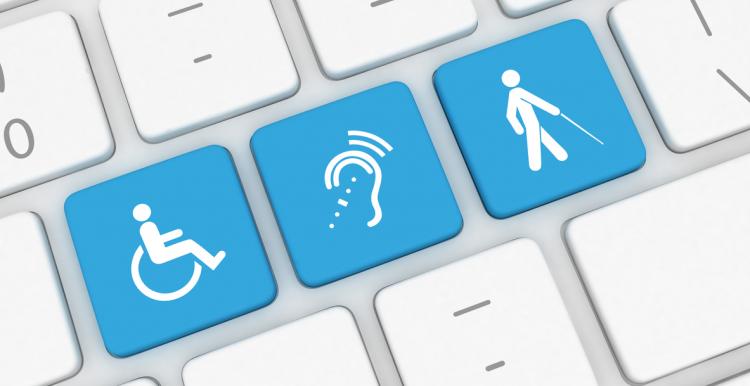How accessible is your website?

From 23 September 2020, Government websites must meet new accessibility regulations to help make sure they can be used by as many people, as possible.
Although the regulations are unlikely to apply to Healthwatch services, we have looked at the steps you can take to make sure your website is as accessible as possible for people who have visual impairments, hearing issues or other conditions that might make accessing information harder.
What are the accessibility regulations?
The 2018 accessibility regulations were introduced to make sure that the content and design of public websites are clear and simple enough for most people to use without needing to adapt the website, while also supporting those who do need assistance – for example, by using screen reader software.
The regulations need to be met by all public sector bodies unless they are exempt. Public sector organisations are judged to have met the accessibility requirements if:
- Their website or app meets the international WCAG 2.1 AA accessibility standard - although there are valid legal reasons for not meeting accessibility standards
- They publish an accessibility statement that explains how accessible their website or app is.
New websites that were published before 23 September 2018 need to comply with the 2018 regulations by 23 September 2020. Any websites or apps published after this date should have complied from 23 September 2019.
Should Healthwatch websites and apps be accessible?
As a matter of best practice, we would advise local Healthwatch to make sure that any website or app they are responsible for meets the AA accessibility standard.
Local Healthwatch also have a general obligation under the Equality Act 2010 to make reasonable adjustments for people with disabilities when they’re needed - for example, by providing the information they need in another, more accessible format.
However, the accessibility regulations are unlikely to apply to most local Healthwatch services because:
- they do meet the definition in the regulations for a public sector body; and
- even if they do meet that definition, they will most likely fall under the exemption which provides that ’non-governmental bodies’ will be exempt unless they provide services that are essential to the public; or specifically address the needs of, or are meant for, persons with disabilities.
Given the different types of organisations who provide Healthwatch services and the range of activities you may be carrying out, we would advise individual Healthwatch providers to seek legal advice if they are unsure whether the regulations specifically apply to their websites and apps.
Making your websites and apps accessible
To make sure your website is accessible you can:
- Talk to your website designer or provider. If you use the website provided by Healthwatch England, this has been built to meet W3C AA standards for accessibility.
- Provide an accessibility statement. If you use the website provided by Healthwatch England, these already provide an accessibility statement for you to use and update.
- Follow best practice when it comes to accessibility. Our full website guidance contains lots of step by step tips on making sure your content is accessible.
Accessibility overlays and platforms
There are several tools out there to help you make your website more accessible. However, before you invest money in one, it's essential to do your research and ensure you spend your money on the tool that will help you the most.
Accessibility platforms
Platforms are usually online cloud-based systems. They monitor the accessibility of your site, show you accessibility issues across your site and explain how to fix them.
Accessibility overlays
Overlays are added to a website and give people more accessibility options such as resizing text, changing colour, or highlighting elements. Among web accessibility experts, overlays are not considered worthwhile due to the many downfalls of the products.
Examples of how you can make sure your everyday content more accessible
The World Wide Web Consortium who set standards provide lots of advice and guidance on accessibility. Examples of how you can make content accessible include:
- Make sure the images you publish have alternative text (alt-text).
- Provide transcripts of audio information
- Break up text with clear headings, short paragraphs and bulleted lists
- Use plain English to ensure your copy is easy to read and understand
